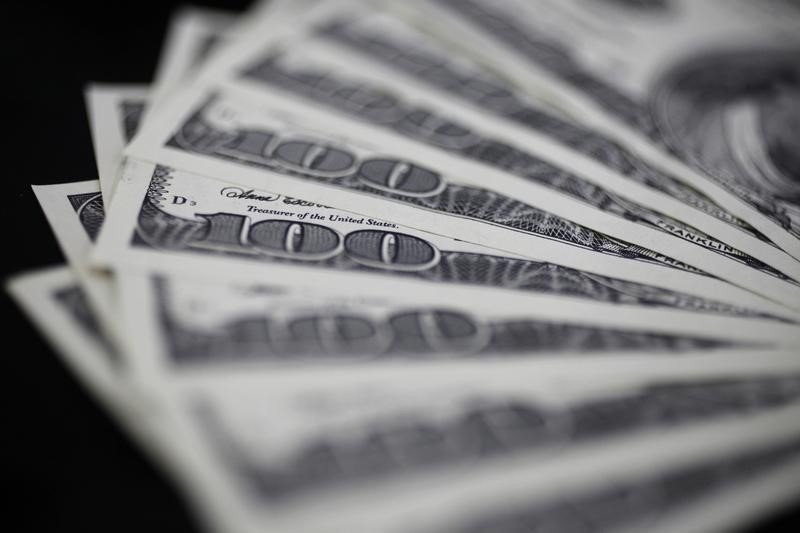By Peter Nurse
Investing.com - The dollar edged higher in early European trade Monday, keeping the positive tone generated last week by the Federal Reserve's hawkish turn, which saw it accelerate its timetable for raising interest rates.
At 2:55 AM ET (0755 GMT), the Dollar Index, which tracks the greenback against a basket of six other currencies, traded 0.1% higher at 92.267, just off its highest level since April, after having gained 1.9% last week. That was its biggest weekly gain since March 2020.
USD/JPY was down 0.3% at 109.84, EUR/USD edged higher to 1.1867, just above Friday’s two-month low, while the risk-sensitive AUD/USD was up 0.2% at 0.7494, just above a six-month low.
The catalyst for this move higher in the dollar was the policy members in the U.S. Federal Reserve, the country’s central bank, reacting last week to the strong economic data, and especially the surge in inflation.
The majority of FOMC members expected two interest rate increases of 25 basis points in 2023, a year earlier than expected but, perhaps more importantly, seven of the 18 members felt that the first increase could come as early as next year.
“I put us starting in late 2022,” St. Louis Fed President James Bullard said Friday during a TV interview on CNBC, referring to interest rate increases by the U.S. central bank.
Additionally, Fed chief Jerome Powell indicated that the members of the Federal Open Market Committee had begun the conversation on stopping the bank’s massive bond-buying program.
This news pushed short-end yields higher, but the longer-end rates have fallen as traders played down the long-term U.S. inflation risk with a more active Federal Reserve.
At 2:55 AM ET, the benchmark 10-year U.S. Treasury note yielded 1.39%, the lowest since early March this year, while the 2-year note yielded 0.27%, its highest level since March 2020.
Attention will now turn to comments from several Fed speakers this week, and an appearance by Fed Chair Jerome Powell before Congress on Tuesday in particular.
“Let’s see whether the Fed is prepared to adopt any new language on tapering. Were views to coalesce around tapering actually starting in September – not December - the dollar could rally further,” said analysts at ING, in a note.
Elsewhere, GBP/USD was down 0.1% at 1.3801, just above Friday’s two-month low, with the rapid growth of the new Covid-19 variant and the associated delay of the country’s full reopening continuing to weigh.
That said, there was some good news late Friday, as Fitch Ratings upgraded its outlook for the U.K. sovereign debt to stable from negative, saying the country’s economy has proved more resilient than it expected.
Eyes turn to Thursday’s meeting of the Bank of England, the last for Chief Economist Andy Haldane.
While the central bank is widely expected to keep its monetary policies on hold, inflation in the U.K. rose above its 2% target in May for the first time in two years, something that Haldane could seize on given his more hawkish stance on reducing stimulus measures.
